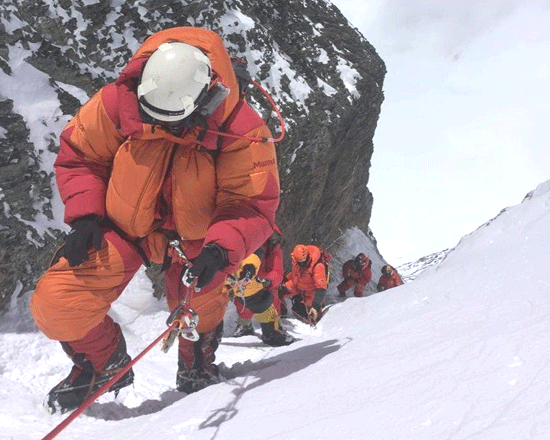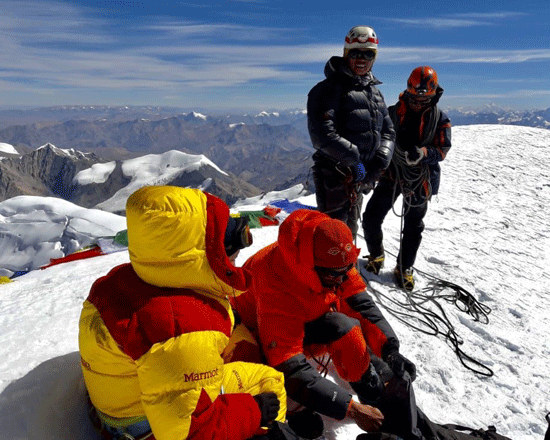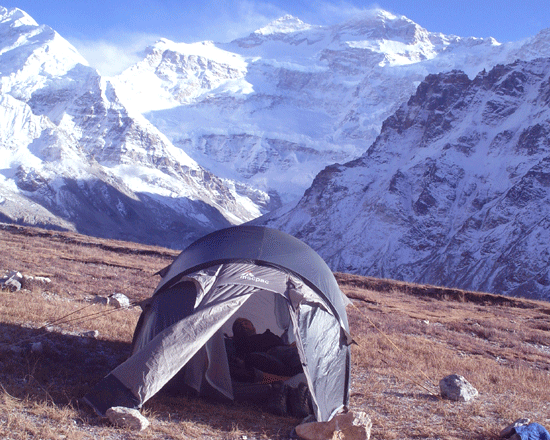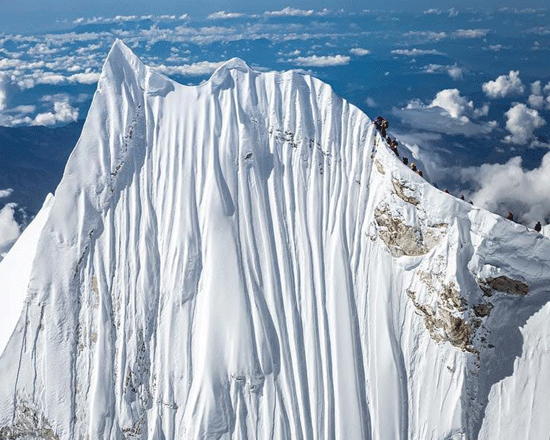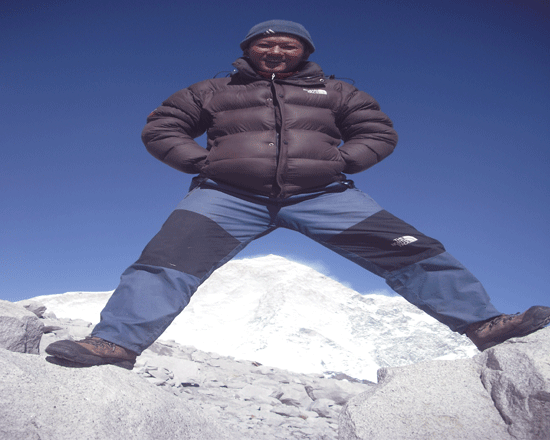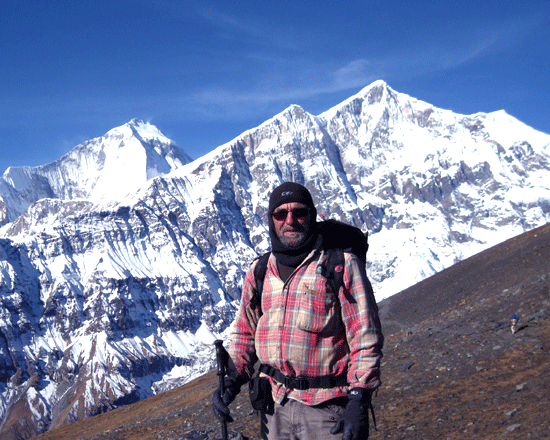High mountain expeditions
Expeditions to high mountains
Mountain expeditions in Nepal are among the most challenging adventure trips that can be undertaken. Mountaineering in Nepal includes Nepal Himalayan expeditions for mountaineers or adventure seekers. Eight of the world’s 14 peaks over 8000m are found in Nepal, including Mt. Everest (8848m), Mt. Kanchenjunga (8586m), Mt. Lhotse (8516m), Mt. Makalu (8463m), Mt. Cho Oyu (8201m), Mt. Dhaulagiri (8167m), Mt. Manaslu (8163m) & Mt. Annapurna (8091m).
Mountain expeditions in Nepal are among the most challenging adventure trips that can be undertaken. 1953, making Nepal a popular destination for expeditions in the Nepal Himalayas. We are members of the Nepal Mountaineering Association and affiliated with the Nepal Tourism Board to operate all Nepal Himalayan expeditions. Additionally, we provide trained, qualified, and experienced climbing guides to ensure the safety and success of your expedition. Since Nepal expeditions have been opened, we at Himalaya Journey Treks & Expeditions have arranged numerous expedition groups to the summit successfully with life-long memories!
Mountaineering and trekking are some of Nepal’s most exciting and adventure-filled activities. This activity was strongly influenced by various expeditions to Mount Everest for mountaineering and trekking. For all Nepal Himalaya expeditions, previous climbing/mountaineering experience, as well as high physical fitness, are essential. As well as the royalties and government-liable charges, Himalaya Journey Treks & Expedition Company offers excellent climbing services with highly regarded Sherpa Sirdars at very reasonable rates.
Sirdar, one of our climbing Sherpas, has already submitted high mountains in Nepal on several occasions. The autumn and spring seasons are the most suitable times for expeditions in Nepal. According to the mountaineers’ wishes and holiday schedules, Himalaya Journey Trekking and Expedition organizes the following mountain expeditions in Nepal either privately or in groups. These include family and friends as well as school and university groups, and Alpine clubs.
1. Preparation and Training
- Physical Conditioning: Climbers must be in excellent physical shape, with strong cardiovascular endurance, muscular strength, and stamina. Training typically includes long hikes with heavy packs, running, and strength training.
- Technical Skills: Knowledge of climbing techniques, rope handling, crevasse rescue, and ice/snow travel is essential. Many climbers practice on lower peaks to hone these skills.
- Mental Preparation: High-altitude climbing requires strong mental fortitude due to the isolation, physical stress, and potential for life-threatening situations.
2. Altitude and Acclimatization
- Altitude Sickness: As climbers ascend, the air becomes thinner, reducing oxygen levels. This can lead to altitude sickness, with symptoms ranging from headaches and nausea to potentially fatal conditions like High-Altitude Pulmonary Edema (HAPE) or High-Altitude Cerebral Edema (HACE).
- Acclimatization: To mitigate altitude sickness, climbers ascend gradually, spending days or weeks acclimatizing at various altitudes. Climbers typically follow the “climb high, sleep low” strategy, where they climb to higher altitudes during the day but descend to sleep at lower altitudes.
3. Logistics and Planning
- Expedition Support: Most high mountain expeditions require logistical support, including guides, porters, and Sherpas, especially in the Himalayas. They help with carrying equipment, setting up camps, and guiding climbers through technical sections.
- Permits and Regulations: Many high-altitude peaks require climbing permits, which can be expensive and involve strict regulations. For instance, climbing Mount Everest requires a permit from the Nepalese government.
- Supplies and Equipment: Essential gear includes specialized clothing for extreme cold, climbing harnesses, ropes, ice axes, crampons, oxygen cylinders, and tents. Supplies must also include food, fuel, and medical kits.
4. Challenges of High-Altitude Climbing
- Weather Conditions: High-altitude weather is unpredictable, with sudden changes that can bring blizzards, high winds, and extreme cold. Climbers must be prepared for all conditions and may spend days waiting for a weather window to summit.
- Technical Difficulties: Climbing high mountains often involves navigating glaciers, icefalls, crevasses, and steep rock faces. Fixed ropes are sometimes used, and climbers must be skillful at using technical climbing gear.
- Health Risks: Prolonged exposure to high altitudes can weaken the body, increasing the risk of frostbite, hypothermia, and exhaustion. Decision-making can also be impaired due to the lack of oxygen.
5. Summit Push
- Timing: The summit push is typically the most exhausting part of the expedition. Climbers often begin in the early hours before dawn to reach the summit and descend to safer altitudes before nightfall.
- Oxygen Use: At extreme altitudes, supplemental oxygen is often necessary. Climbers carry oxygen cylinders and use masks to breathe, particularly above 7,000 meters.
- Psychological Strain: The final ascent is mentally and physically taxing. Climbers face exhaustion, fear, and the pressure of making critical decisions under extreme conditions.
6. Descent and Recovery
- Descent: After reaching the summit, climbers must safely descend, which can be more dangerous than the ascent due to fatigue and deteriorating conditions.
- Reentry to Lower Altitudes: Returning to lower altitudes allows the body to recover from the stresses of high altitude. This process can take days, and climbers must still be cautious of their physical condition.
- Post-Expedition Care: Recovery involves rest, nutrition, and medical attention if necessary. Some climbers may suffer from long-term effects like frostbite or altitude-related issues.
7. Environmental and Ethical Considerations
- Leave No Trace: High mountain environments are fragile, and climbers are encouraged to minimize their impact by packing out all waste and respecting local ecosystems.
- Cultural Respect: Many high-altitude regions are home to indigenous peoples with rich cultural traditions. Respecting local customs and contributing to local economies through responsible tourism is crucial.
8. Notable High Mountain Expeditions
- Mount Everest (8,848m) Expeditions: The most famous high-altitude climb, with routes like the Southeast Ridge (from Nepal) and the North Ridge (from Tibet).
- K2 (8,611m) Expeditions: Known as the “Savage Mountain,” K2 in Pakistan is one of the most challenging climbs due to its steep faces and treacherous weather.
- Aconcagua (6,959m) Expeditions: The highest peak in South America, located in Argentina, is a popular but challenging climb.
9. Cultural and Historical Significance
- High mountain expeditions are often tied to the cultural and historical heritage of the regions. For example, the Himalayas are considered sacred in many Asian cultures, and expeditions to peaks like Everest have a long history involving exploration, colonialism, and mountaineering legends.
High mountain expeditions demand respect for the environment, careful preparation, and an understanding of the physical and mental challenges involved. Despite the risks, the allure of standing atop some of the world’s highest peaks continues to draw adventurers from around the globe.

